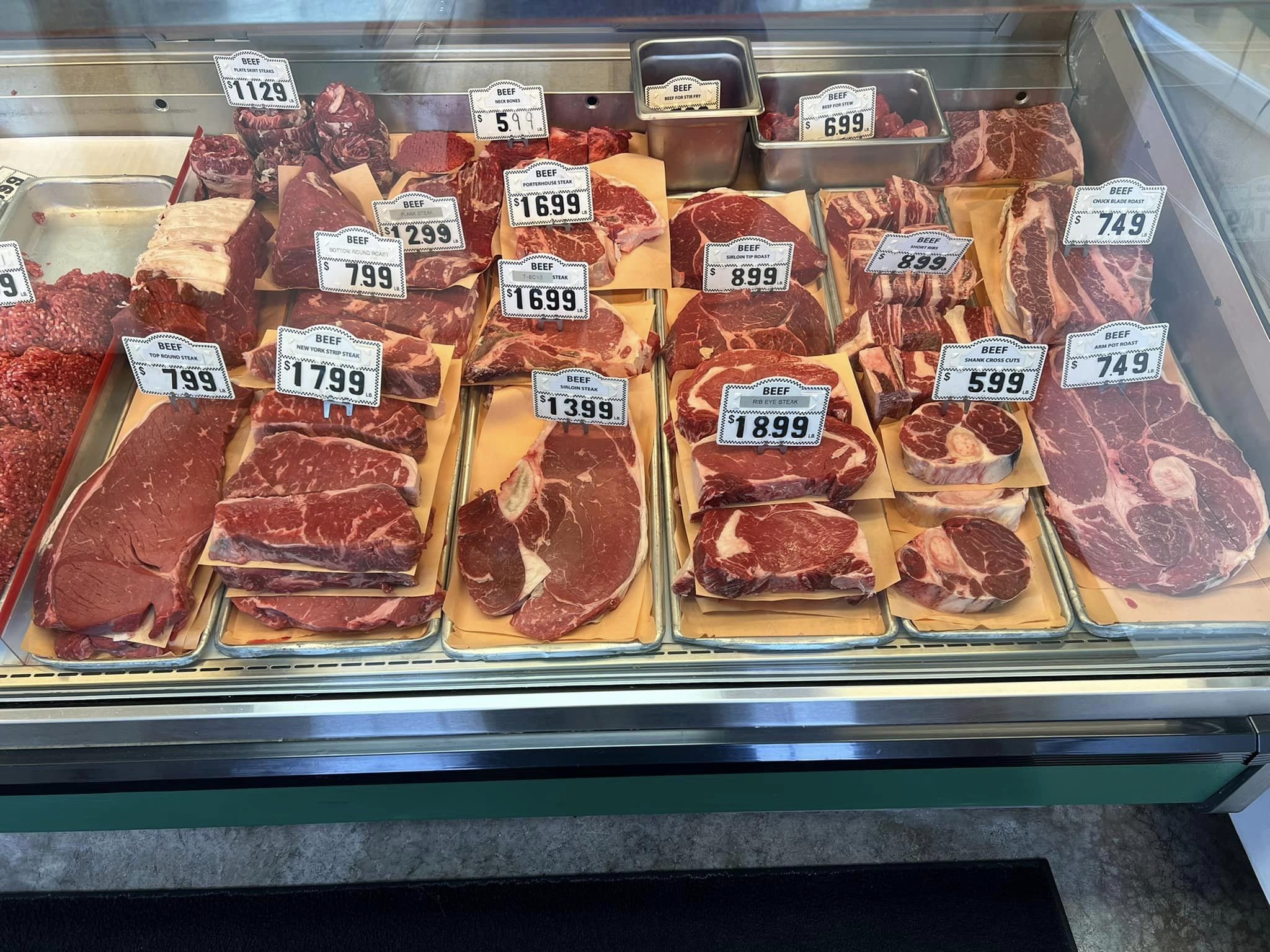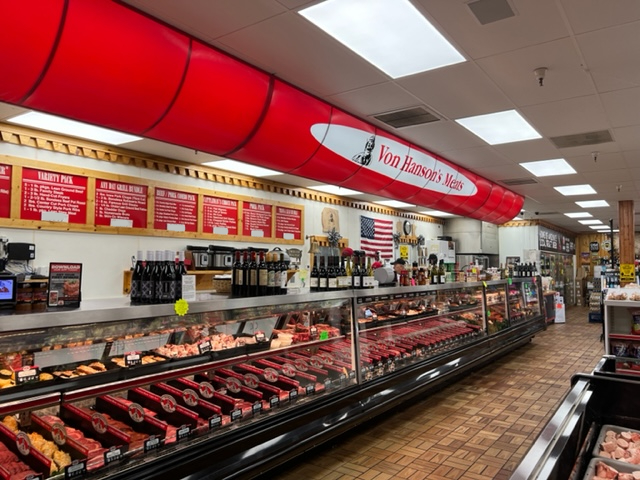Discover the Art of the Butcher's Cut in a Modern Meat Market
In the ever-evolving landscape of modern-day meat markets, the butcher's cut has actually transcended its traditional roots, combining olden craftsmanship with modern methods. bagley farms meat market edwardsville il. Today's butchers are not just processors of meat; they are knowledgeable artisans who emphasize sustainability and honest sourcing. Their expertise in picking and preparing cuts tailored to specific cooking requirements offers an unparalleled dining experience. What really sets the modern-day butcher apart is their capability to forge a much deeper connection in between customers and the beginnings of their meat. Just how do these masters equilibrium tradition with technology, and what implications does this have for the future of meat consumption?
Evolution of Butchery Methods

The mid-20th century saw butchery techniques even more refined by scientific insights right into muscular tissue biology and meat aging, boosting both tenderness and taste. Innovations like vacuum packaging and refrigeration expanded item shelf-life, enabling butchers to diversify offerings and boost high quality control. This period also marked the surge of specific tools, such as band saws and meat slicers, which enhanced accuracy and performance in meat handling.
The 21st century has actually introduced electronic technology right into the butchery world. Electronic systems currently assist in monitoring pet provenance and optimizing cuts to fulfill certain customer choices. Furthermore, a rebirth in artisanal butchery has actually emerged, mixing conventional skills with modern expertise to accommodate customers seeking moral and sustainable meat options. This advancement underscores a vibrant interplay between practice and technology, meeting modern demands while preserving the craft's heritage.

Comprehending Meat Cuts

Recognizing the ins and outs of meat cuts is vital for both butchers and consumers seeking quality and value. For butchers, accurate cuts mirror skill and regard for the craft, making sure marginal waste and optimum yield.
The primary groups of meat cuts include primitive, sub-primal, and retail cuts. Primal cuts, such as the loin, rib, and chuck, are the huge sections originally separated from the carcass. Butchers after that break these down better into sub-primal cuts, before ultimately producing retail cuts readily available to consumers, like ribeye or tenderloin. Each phase requires cautious attention to anatomical structure and muscle mass composition.
Recognizing muscular tissue make-up is important; muscle mass utilized much more regularly by the animal often tend to be harder and are best matched for slow-moving cooking methods, while less-used muscular tissues, like those found in the loin, are much more tender and perfect for barbecuing or roasting. Experience with these differences encourages dig this consumers to make educated options, boosting their culinary ventures.
Selecting High Quality Meat
Picking the appropriate meat includes more than simply picking a visually enticing item from the display screen. The art of selecting high quality meat requires a critical eye and knowledge of particular attributes that indicate quality and excellence.
Second of all, think about the marbling, which describes the white flecks of fat within the muscle. Correct marbling is a crucial indicator of inflammation and flavor, as it thaws during food preparation, enhancing the meat's juiciness. Bear in mind, higher marbling commonly associates with premium quality cuts, such as USDA Prime.
Texture is an additional critical factor; meat ought to feel solid to the touch, not slimy or extremely soft. Furthermore, be conscious of the fragrance. Fresh meat must have a tidy, neutral odor, totally free from any kind of sour or off-putting odors.
Coupling Cuts With Cooking Techniques
Successfully pairing cuts of meat with the proper food preparation methods is necessary for achieving ideal taste and texture. Different cuts differ in tenderness, marbling, and connective cells content, each requiring certain strategies to unlock their capacity. For example, tender cuts like filet mignon and ribeye, with their integral marbling, benefit from high-heat, quick-cooking approaches such as cooking or pan-searing. These techniques improve the meat's all-natural tastes and ensure a juicy surface.
Alternatively, tougher cuts like brisket and chuck roast are rich in collagen, which breaks down right into gelatin when prepared gradually. These cuts are perfect for braising or slow roasting, allowing the meat to soften with time and create deep, intricate tastes. In a similar way, cuts such as short ribs and pork address shoulder prosper with slow-cooking approaches, where prolonged cooking times transform their durable appearances right into delicious dishes.
Lamb shanks and oxtail, which need prolonged cooking to soften, are perfect prospects for stewing or slow simmering. These methods coax out abundant, hearty tastes while keeping moisture. By recognizing the special characteristics of each cut, cooks and home cooks alike can elevate their cooking creations, making certain each meal is both pleasing and remarkable.
The Butcher's Duty Today
Navigating the developing landscape of the contemporary meat market, the butcher's duty today extends beyond simple prep work of he has a good point cuts. Contemporary butchers are cooking artisans, educators, and advocates for lasting practices.
In enhancement to crafting exact cuts, butchers now involve directly with customers, using cooking suggestions and customizing options to suit specific needs and choices. Their knowledge in meat aging, marbling, and flavor profiles equips consumers to make enlightened decisions, improving their cooking experiences. This individualized service exhibits the butcher's evolving role as a trusted advisor in the kitchen area.
Additionally, butchers are crucial in reducing waste, using entire animals to create diverse products such as sausages and supplies - bagley farms meat market edwardsville il. This thorough approach not only respects the animal however likewise straightens with modern sustainability goals. In this method, the contemporary butcher symbolizes both practice and technology, adjusting to an ever-changing market while protecting the virtuosity and honesty of their craft

Final Thought
Proficiency in recognizing diverse meat cuts and high quality signs equips butchers to give informed suggestions, lining up certain cuts with ideal cooking approaches. By recognizing historical techniques while embracing contemporary needs, the butcher's role continues to be vital in today's innovative meat market.